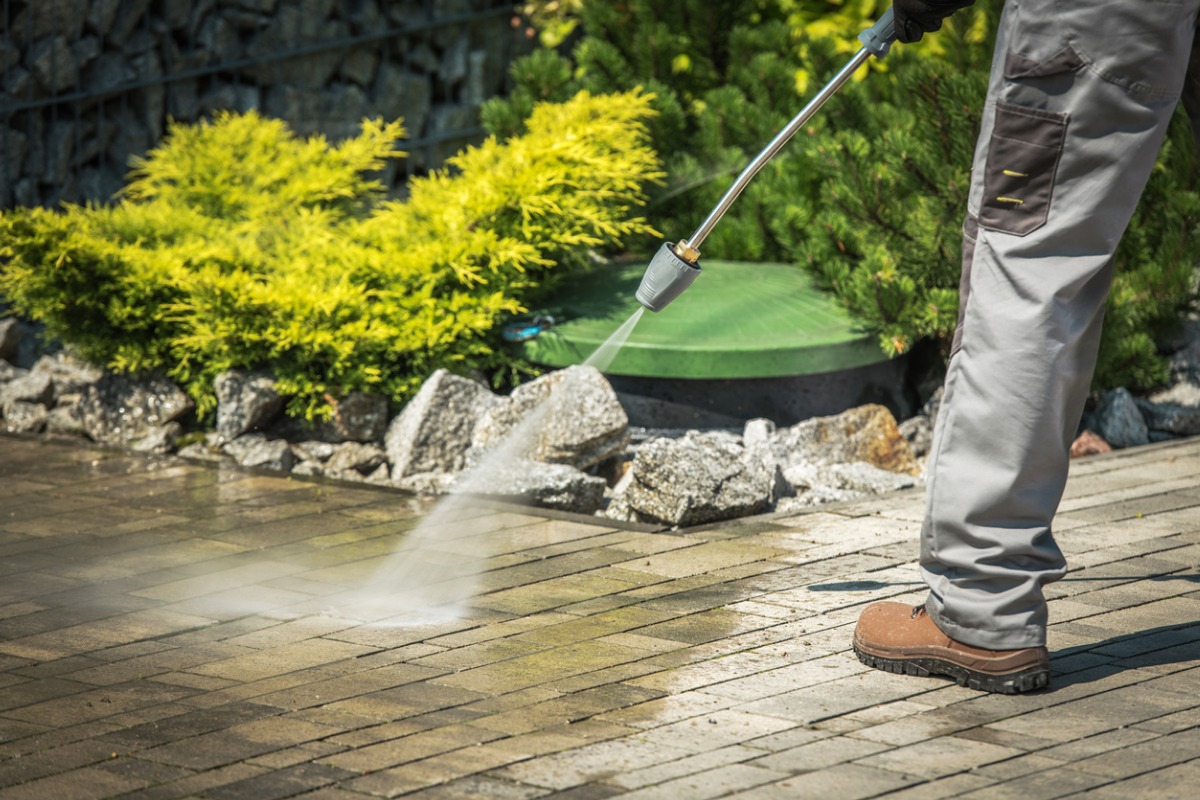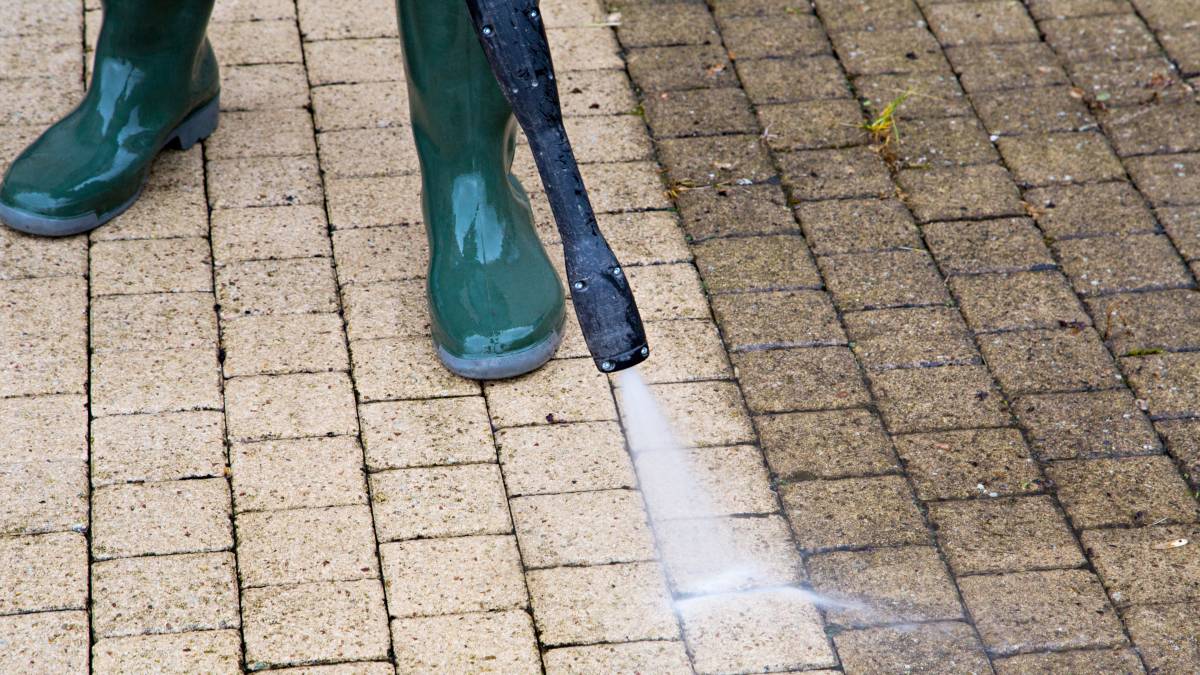Explore the Advanced Tools Made Use Of by Pressure Washing Lockhart Specialists
Explore the Advanced Tools Made Use Of by Pressure Washing Lockhart Specialists
Blog Article
Revitalize Your Home: The Ultimate Overview to Pressure Laundering
Stress cleaning is an indispensable tool for homeowners intending to bring back the visual allure and durability of their residential or commercial properties. To browse these intricacies and attain ideal results, it is crucial to explore the basic aspects of pressure washing, including useful advice on guaranteeing and dealing with typical spots security throughout the process.
Recognizing Stress Washing
Stress washing is an effective cleaning technique that makes use of high-pressure water spray to remove dust, crud, mold, and various other impurities from various surfaces. This technique is especially reliable on difficult surfaces like driveways, sidewalks, decks, and siding, where typical cleaning techniques may drop short. By utilizing specialized tools that produces high-pressure streams of water, stress washing can penetrate deeply right into surface areas, successfully removing and removing persistent particles.
The procedure is not only effective yet also ecologically pleasant, as it often relies exclusively on water, reducing the demand for rough chemical cleaners. In addition, stress washing can boost the visual appeal of residential properties, keeping their value and prolonging the life-span of surface areas by preventing deterioration triggered by pollutants.

Selecting the Right Tools
Picking the ideal equipment is essential for accomplishing ideal cause pressure cleaning. The very first choice entails choosing between electric and gas stress washers. Electric designs are typically lighter, quieter, and ideal for residential tasks like cleaning up patio areas or vehicles. Gas systems, on the other hand, provide higher pressure and flow prices, making them excellent for bigger jobs such as cleaning driveways or home siding.
Next, consider the stress ranking, determined in pounds per square inch (PSI) For light-duty tasks, a stress washer with 1,300 to 1,600 PSI is enough, while medium-duty jobs generally need 1,600 to 2,500 PSI. Sturdy jobs may require makers exceeding 2,500 PSI.
Additionally, the flow price, determined in gallons per min (GPM), influences cleansing efficiency (Pressure Washing Lockhart). A greater GPM allows for quicker cleansing but may require more powerful devices
Strategies for Reliable Cleaning Up

The strategy of overlapping strokes is important for also coverage. Begin from the leading and function your means down, ensuring that each pass a little overlaps the previous one. This protects against streaking and makes certain a detailed clean. Furthermore, keeping a regular distance from the surface area, typically 12 to 18 inches, enables efficient application without triggering injury.
Using the proper nozzle is also essential. A wide-angle nozzle is excellent for bigger areas, while a narrow nozzle can target stubborn dust or crud. Additionally, making use of a sweeping motion as moved here opposed to a stationary spray aids to avoid concentrated areas of pressure, which can cause surface area damage.

Tackling Common Stains
When it pertains to maintaining the look of outside surface areas, resolving usual stains properly is critical for prolonging their lifespan and enhancing curb allure. Numerous surfaces, including plastic, concrete, and wood, can accumulate discolorations from natural materials, oils, and toxic wastes, requiring a targeted technique.
For oil spots, a mix of degreasers and pressure cleaning can yield exceptional results. Use the degreaser to the discolored area, allowing it to permeate before utilizing a stress washer to remove the residue. Organic spots, such as mildew or algae, commonly require a remedy having bleach or a devoted mold and mildew cleaner, complied with by pressure cleaning to restore the surface area's original look.
Corrosion stains, commonly discovered on metal surface areas, might necessitate specialized corrosion cleaners. Use the item and scrub the location prior to pressure washing to get rid of any lingering discoloration. It's crucial to evaluate any type of cleaning solution on a tiny, inconspicuous area initially to avoid damage.
Safety Tips and Finest Practices
Ensuring safety while stress cleaning is extremely important, as the high-pressure water can pose significant dangers otherwise taken care of correctly. To safeguard yourself and others, constantly you could try these out wear ideal personal safety tools (PPE), including safety goggles, handwear covers, and sturdy footwear. This gear will shield you from flying debris and the potential for injury.
Before starting, examine the pressure washer for any type of leakages or damaged parts. Acquaint yourself with the devices's guidebook to recognize its procedure and safety and security features. Additionally, ensure the area you are working in is without barriers and that any electric connections are safe from water direct exposure.
When operating the pressure washer, keep a safe range from surface areas and stay clear of intending the nozzle at individuals, pets, or fragile objects. Utilize the appropriate nozzle for the task, as different nozzles create varying spray patterns and pressure degrees. Finally, be conscious of your surroundings: safe and secure loosened items, expect electric lines, and avoid operating in wet conditions that may result in drops or slips.
Conclusion
In verdict, stress washing offers as a vital tool for homeowners seeking to enhance residential property looks and long life. By comprehending the complexities of tools choice, efficient cleaning techniques, and common tarnish removal, the potential for rejuvenating one's home becomes obvious.
Stress washing is a powerful cleaning technique that uses high-pressure water spray to eliminate dust, gunk, mold, and various other contaminants from numerous surfaces. By employing specialized devices that generates high-pressure streams of water, stress washing can permeate deeply right into surface areas, successfully dislodging and cleaning away persistent debris.
However, it is crucial to understand that pressure cleaning requires a specific level of skill and understanding to avoid destructive surfaces. Softer products like timber or repainted surface areas necessitate a reduced pressure establishing to protect against damages, whereas concrete or block surfaces can withstand greater stress degrees.
Organic stains, such as mildew or algae, typically call for a solution containing bleach or a specialized mold and mildew cleaner, complied with by pressure cleaning to restore the surface area's original appearance. - Pressure Washing Lockhart
Report this page